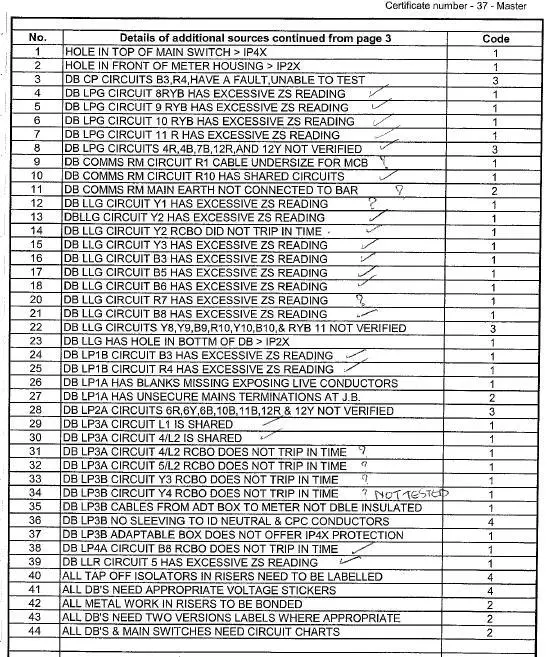A customer has asked me to review and comment on a PIR that was carried by their national maintenance company. It was carried out to the 16th in May.
The building is just over 5 years old and is spread across 3 floors.
I'd like your expert opinions on some of the codes before I make my own mind up. I wont tell you what codes were given just yet, only my opinion.
High Zs - The circuits were mainly split air con unit with 20amp D type MCB's The average readings were a few ohms above the corrected values but within table 41.3 IMO Code 2
Shared Circuit - Within the Comms Room there is an original 10amp radial circuit feeding a FCU for a high temp alarm. Someone has added a water detection panel and the feed has been taken directly from the MCB feeding the high temp alarm. The new circuit has been wired in 2.5mm FP200 to a FCU. IMO no code as it's allowed.
20mm Hole in the top of a 200amp MEM switched fuse within a locked Switch Room - IMO code 2
Thanks in advance
The building is just over 5 years old and is spread across 3 floors.
I'd like your expert opinions on some of the codes before I make my own mind up. I wont tell you what codes were given just yet, only my opinion.
High Zs - The circuits were mainly split air con unit with 20amp D type MCB's The average readings were a few ohms above the corrected values but within table 41.3 IMO Code 2
Shared Circuit - Within the Comms Room there is an original 10amp radial circuit feeding a FCU for a high temp alarm. Someone has added a water detection panel and the feed has been taken directly from the MCB feeding the high temp alarm. The new circuit has been wired in 2.5mm FP200 to a FCU. IMO no code as it's allowed.
20mm Hole in the top of a 200amp MEM switched fuse within a locked Switch Room - IMO code 2
Thanks in advance



